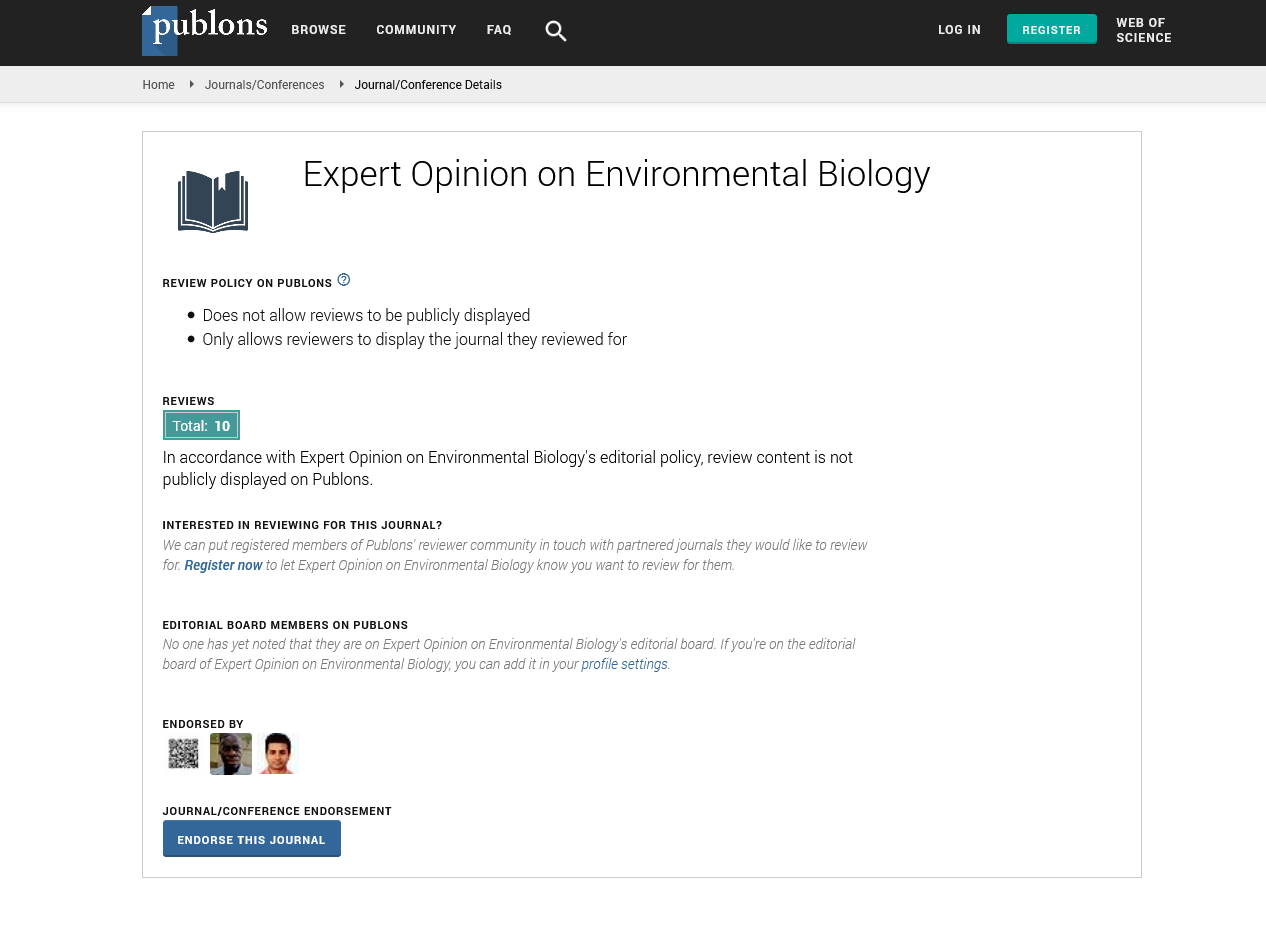Wetland restoration with bio solids and secondary treated wastewater at Alisos Watershed
Perfecto Barragan-Pena, Gabriel Bonillas Garcia, Rommel Fernando Benitez-Paz and Irma Veronica Gil Delgado
Tecnologico Nacional de Mexico/Instituto Tecnologico de Nogales
: Expert Opin Environ Biol
Abstract
An additional source of water to supply the growing demand in semiarid landscapes like Alisos Watershed could be wastewater, once subjected to secondary treatment. A wastewater treatment plant that discharges about 220 L/s to Alisos Watershed, and complies with NOM-003-SEMARNAT-1996, is located 24 km South to Nogales, Sonora in Mexico. This research project aimed to use part of this water in a restoration program focused on native flora. The site of 1.5 Ha has 31º07’53” North and 110º56’12.23” West as coordinates. The system to achieve both wetland restoration and sub-aquifer recharging, required to filter the water with a zeolite and CaCO3 bed packed in tanks of 110 L of capacity. The use of this mineral was to eliminate phosphates and excess of nitrogen as well as to diminish the bacteria population. Phosphate elimination avoids eutrophication, the growth of invasive plants such as water hyacinth (Eicchornia crassipes) and Salvinia molesta. Water and soil characterization were carried out in order to determine microorganism population in the outlet of the wastewater treatment plant and type of soil as well as permeability behavior. Hydrodynamic circulation method was implemented to conduct the effluents simulating the hydrologic pattern of the site. Native flora was identified with the support of Borderland Restoration, in Patagonia, and Arizona native plant society. Three channels were designed to lead the water from the filtration tanks in winding branches of 70 m length. The results show favorable growth of species endemic in Sonora such as Heliomeris longifolia, Asclepias angustifolia, Zornia reticulata, and Juglans major, the latter included in the list of menaced species in NOM-059-SEMARNAT-2010. Wetland restoration has a direct impact on native flora and fauna since it helps out to consolidate the food chain; besides, it recharges the aquifer indirectly. The whole ecosystem contributes to a variety of services lowering the pollution levels of air and improving quality of life of human beings.
Biography
Perfecto Barragan-Pena has worked with the removal of heavy metals from aqueous solutions with natural adsorbents in either batch or dynamic sorption processes. He studied his Doctorate in Environmental Sciences at Instituto Tecnologico de Toluca, in Mexico. He currently works as a Professor at Instituto Tecnologico de Nogales where he teaches Statistics and Sustainable Development within the Postgraduate Program. He also directs research projects related to restoration of ecosystems and wastewater treatment. He has published scientific articles in Journal of Environmental Sciences (China) and Environmental Technology (United Kingdom). Among other successful projects he worked on biodiesel production from used cooking oil in 2009 and a demonstration site of green infrastructure in partnership with Watershed Management Group from Tucson, AZ, in 2012. Currently, he directs the project Wetland Restoration with Biosolids and Wastewater Treated at Alisos Watershed, which received federal grants.
E-mail: perfectobarragan@itnogales.edu.mx
 Spanish
Spanish  Chinese
Chinese  Russian
Russian  German
German  French
French  Japanese
Japanese  Portuguese
Portuguese  Hindi
Hindi 
